How Finance Is Shaping the Economies of China, Japan, and Korea
HOW FINANCE
IS SHAPING THE
ECONOMIES OF
CHINA,
JAPAN,
AND
KOREA
EDITED BY YUNG CHUL PARK AND HUGH PATRICK WITH LARRY MEISSNER
 Columbia Business School
Columbia Business School Publishing
Columbia University Press
Publishers Since 1893
New York Chichester, West Sussex
Copyright 2013 Columbia University Press
All rights reserved
E-ISBN 978-0-231-53646-2
Library of Congress Cataloging-in-Publication Data
How finance is shaping the economies of China, Japan, and Korea / edited by Yung Chul Park and Hugh Patrick with Larry Meissner.
pages cm
Includes bibliographical references and index.
Summary: A definitive historical record of financial development for three countries, highlighting the centrality of the financial system in each countrys economic development and growth Provided by publisher.
ISBN 978-0-231-16526-6 (cloth : alk. paper) ISBN 978-0-231-53646-2 (ebook)
1. FinanceChina. 2. FinanceJapan. 3. FinanceKorea (South)
HG187.C6H69 2013
332.0951dc23
2013015896
A Columbia University Press E-book.
CUP would be pleased to hear about your reading experience with this e-book at .
COVER DESIGN: Noah Arlow
References to Internet Web sites (URLs) were accurate at the time of writing. Neither the author nor Columbia University Press is responsible for URLs that may have expired or changed since the manuscript was prepared.
Contents
Hugh Patrick
Yiping Huang, Xun Wang, Bijun Wang, and Nian Lin
Edward J. Lincoln
Yung Chul Park
Young-Hwa Seok and Hyun Song Shin
THE CENTRAL theme of this book is in what ways, and to what degree, the financial system has mattered, and what roles it has played in the Japanese economy since about 1990, in the Korean economy since about 1980, and in the Chinese economy since its reform process began in 1978.
The purpose is to make definitive contributions to the financial histories of these countries available to a wide audience. Thus, the rigorous analysis essential for economists and financial specialists is written to be readily accessible to the nonspecialist curious about what are fascinating stories.
While these three economies are at different stages of developmentand have distinct histories, institutions, political systems, and societal characteristicstheir economies share basic commonalities in rapid catch-up development and in economic structure. Moreover, while financial development in each country has been driven by domestic forces, international short-term financial flows have been an opportunity and a challenge.
For all three countries, the nature and role of the financial system and its development and evolution in the process of real economic growth are integral, yet complex and nuanced. The result is a fascinating spectrum of experiences, and Japans mediocre economic performance since 1990 relative to its potential provides a case study of the challenges of dealing with economic success as a mature, high-income advanced economy. The transition from an investment-led to a consumption-led growth model is not easy.
Policy makers in Japan, Korea, and China have certainly believed that finance matters. They have been deeply involved in the functioning, development, and, to one degree or another, control of their financial systems. They have learned, more in Korea and Japan than so far in China, that financial intermediation in the long run is best based on competitive financial markets, as well as control over inflation, macroeconomic stability, an appropriate institutional framework and structure, and effective prudential regulation for institution and system safety.
The introductory chapter provides a broad overview and explicit, comparative descriptions of the financial and economic development and growth of Japan, Korea, and China. It is not intended to summarize or synthesize the findings of the other chapters.
The final chapter, by Young-Hwa Seok and Hyun Song Shin, addresses the problems created by foreign short-term capital flows. These flows can and do create domestic liquidity conditions that result in housing (property) and other asset-market booms and exacerbate problems in the real economy when the bubbles burst. The authors stress the role of banks that seek loanable funds beyond their deposit base by borrowing short term to lend longer term, using Korea as a notable case. Korea engaged in the double mismatch of borrowing short term to lend long term and of borrowing in foreign currencies to lend in its domestic currency, during both the 19971998 Asian financial and 20072009 global crises. Importantly, the authors stress the importance of macro-prudential policiesthat is, policies concerned with the resilience of the financial system as a wholeand review the tools available. In particular, they look at policies intended to neutralize the effects of capital inflows when monetary policy is constrained.
The country chapters, by Yiping Huang, Xun Wang, Bijun Wang, and Nian Lin (China, ), are comprehensive and thorough descriptions and analyses that can be taken as definitive accounts of each countrys financial development and evolution.
In principle, the cutoff date for the country studies is 2010 when the global financial crisis had receded and recovery was under way. Analysis for Japan begins in about 1990 and for Korea in about 1980. For China we start in 1978 when its reform process began. These time periods are selected because an extensive literature is available on the earlier postwar financial development of Japan and Korea. The literature on Chinas financial development is more limited.
Japan by 1990 was economically and financially developed, a high-income, mature industrial economy not unlike its Western high-income counterparts. At the other extreme, China began from a very low base and in 2010 was still far below where Japan and Korea had been in 1990. Korea is an intermediate case. It began its economic and financial development from a lower postwar base than Japan and now is far along in its catch-up process of real economic growth and financial development.
Each country has had to deal with burgeoning globalization from the 1980s, and especially with two major external shocks: the Asian financial crisis of 19971998; and the United Statesgenerated global financial crisis of 20072009, symbolized for many by the Lehman shock of September 2008.
Nonetheless, the financial development and transformation of each country has been fundamentally a domestic story. Each began with strong controls over foreign capital inflows and outflows. With domestic financial development, the gradual easing of foreign capital controls was necessary, both for domestic reasons and in response to the deepening of the global economic and financial systems.
Each of the countries in this study has engaged in a somewhat different financial development as domestic circumstances evolved, and the global context has changed. Now the boom and bust that has begun the twenty-first century is causing a major rethinking of the role of finance. It is the hope of those involved in this project that an understanding of history and the methods of analysis presented here will help policy makers and provide both suitable reasonable hope and caution to those economies still on the doorstep of liberalization.
A note on terminology: this is a book on finance and economics, not international relations. We use Korea to refer to the Republic of Korea, which is sometimes referred to as South Korea. The official title of China is the Peoples Republic of China. And Japan is Japan.

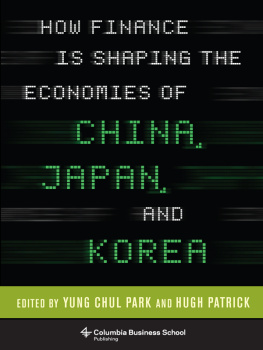

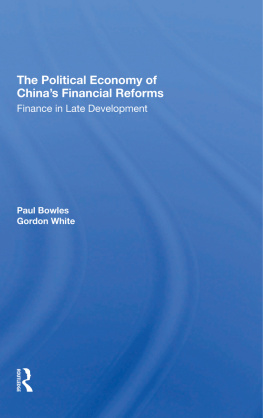

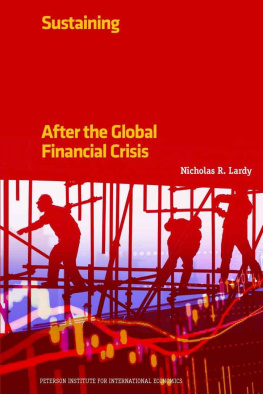
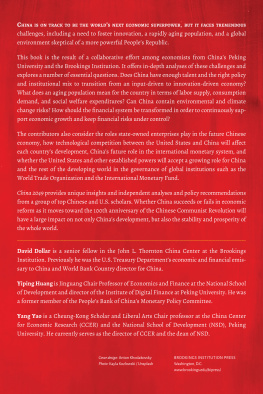

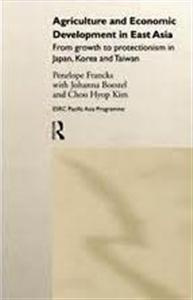

 Columbia Business School
Columbia Business School